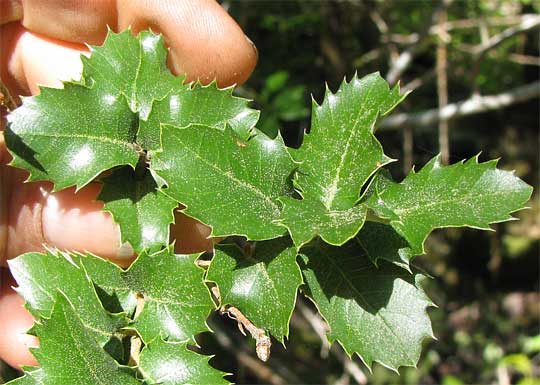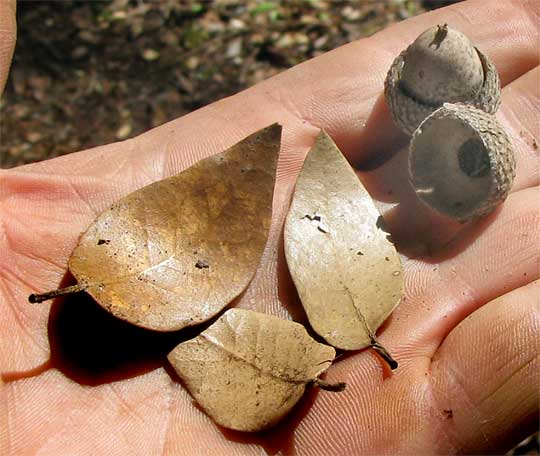Excerpts from Jim Conrad's
Naturalist Newsletter
from the May 3, 2009 Newsletter, issued from the Siskiyou Mountains west of Grants Pass, Oregon:
CANYON LIVE-OAK'S TWO LEAF TYPES
On my first walk into the woods here a local person introduced me to "Oregon Holly," a low, woody shrub with leathery, evergreen leaves with prickly margins. You can see a branch of what I was shown below:

I would have let the introduction pass except that I'd already met that species, back in 2005 during my summer with Fred and Diana in California's Sierra Nevadas, so now I felt compelled to add a piece of information:
"I understand why local folks may call this a holly," I said, "but would you believe that it isn't a holly at all? It's actually a young oak tree that eventually may reach 80 feet tall. As the tree grows, its leaves will stop being spiny edged and become smooth- margined, looking a little like bay leaves." My friend's face showed how fast I was losing credibility with him.
Still, the tree was the Canyon Live-oak, QUERCUS CHRYSOLEPIS, distributed from southwestern Oregon through California to northern Baja, Mexico. Nearby stood a mature specimen too tall to see the leaves, but beneath the tree lay the leaves and acorns seen below:

Those old, faded acorn cups don't show a distinguishing feature they have when young, when they're covered with golden-yellow "wool." In fact, another common name for the tree is Golden Cup Oak.
In the old days Canyon Live-oak's wood was famed as the hardest of all West-Coast woods, and people sought it out when they needed to make maul handles and wagon spokes.